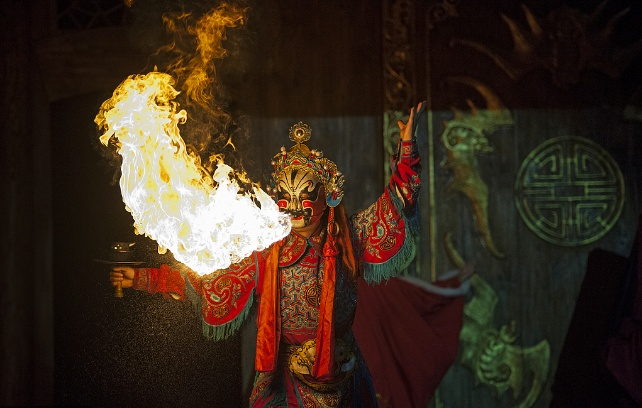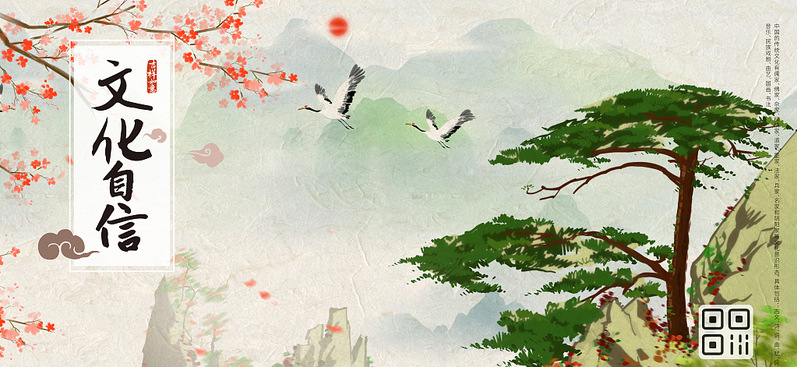
蒲公“英”说书人
亲爱的听众朋友们,晚上好!欢迎来到“蒲公‘英’说书”电台,我是本期说书人戴玙晨。在这里,每一缕声波承载千年故事,每一句话语勾勒历史轮廓,让我们一同穿越时空的长廊,探寻那些被岁月尘封却历久弥新的传奇篇章。本期我们的主题是——自信则开明,文化之道也。
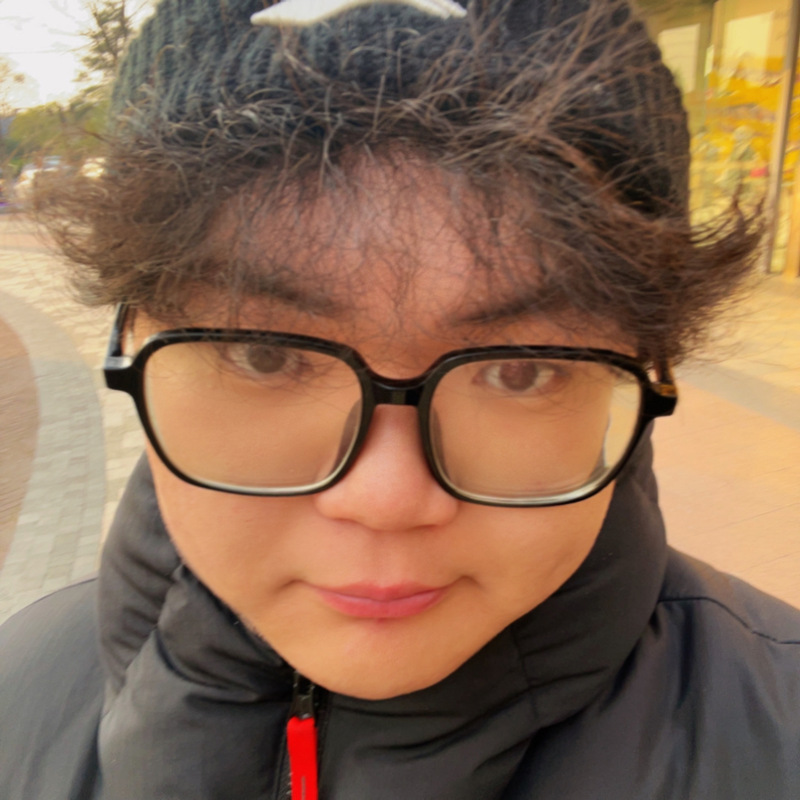
原文
In the past few years, China and its people have been experiencing increased cultural confidence; a deep-seated love for the traditions, arts and practices, or for the myths and stories that fashioned and inspired Chinese culture for centuries is reflected in countless exhibits, plays, movies, novels, videogames, as well as in fashion and popular hobbies.
This is a positive phenomenon, especially when it comes along a rediscovery of the diversity of Chinese cultural expressions. This diversity has been fostered by the variety found in geographical regions and schools of thought as well as by the dizzying inventiveness of the great Chinese artists, craftsmen, poets or novelists.Some people wonder whether increased cultural confidence goes necessarily along a tendency to close in on oneself and reject the culture of others. This is not and should not be the case. In fact, people and nations having developed a healthy dose of self-confidence display more empathy toward others: they do not feel threatened by them, and they look forward to nurturing exchanges that will prove to be mutually beneficial.
In which ways do cultural confidence and cultural openness reinforce each other? The process can be described as follows.
Finding a solution to these problems is what everyone wishes; as it benefits all. The feeling of commonality might also arise from the collapse of traditional ways to understand one's world, identity and culture, or from the spreading of a culture of violence at school or in society at large, or yet from the difficulty to implement mechanisms of harmony and reconciliation. As a global community, what we first share is a feeling of urgency and disarray.When we reach this point, we need to realize anew the variety of the cultural resources we mobilize or could mobilize for answering such challenges. If we do confront common problems and crises, it is true also that there remain tremendous differences among the worldviews or the core values found in Confucian, African or European societies for instance. On authority structures, on relationships with nature, on processes of discussion and evaluation, our ground intuitions, logical approaches, canonical texts and ingrained norms of behavior are varied, divergent or even contradictory.
Furthermore, our cultural traditions are embedded in historical memories that conflagrate one with another. Discovering the wide array of our differences might be, at the same time, exhilarating and extremely puzzling.
This is where a strategic choice is to be made. We can and should decide to make this tremendous variety of cultural resources the toolbox that enables us to interpret anew our own tradition and culture. In other words, people who experience cultural confidence have enough trust in their own resources for investigating and appreciating other cultures without fearing to lose their identity in the process.
Likewise, they welcome the interest shown by representatives of other cultures toward their tradition, and they listen to the insights brought by this exchange of viewpoints and resources. In other words, the resources offered by another cultural corpus may help us to better understand ourselves, to give new life and impetus to the wisdom that our cultures have accumulated throughout the ages. In this perspective, all cultures, creeds and worldviews are perpetually reshaped. What defines them is never taken for granted. Rather, it is both being rediscovered and transformed through a process of exchange and re-interpretation.
Thus, the core of our identity is never behind us, it is always beyond: it perpetually evolves as my relationships with other cultures and consequently with my own culture are continuously deepened and renewed.
Through this process, we give new impetus to our own localized culture and wisdom, by the very fact of sharing our resources with others and showing interest for their own resources. At the same time, this reshaping of one's culture does not produce confusion or ambiguity. Rather, it defines and sometimes sharpens one's sense of belonging and core values. The cultural resources we mobilize for finding solutions to global challenges will remain localized, they will remain different in the way they are conceived of and implemented.
However, throughout the exchanges and dialogue we dare to foster, these particular solutions will vary considerably from the ones suggested by an understanding of one's culture and identity that would remain insulated from the rest of the world. When cultural confidence and cultural openness join together, our self-understanding and our inventiveness grow and evolve in ways we would never have imagined.
本文摘录自China Daily 2023-11-15
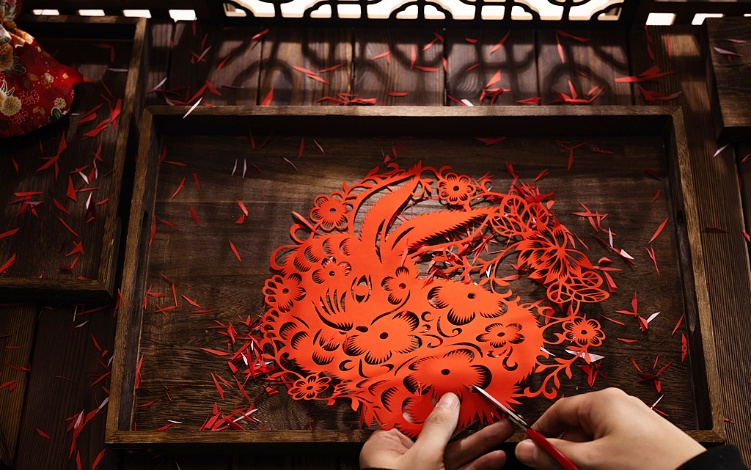
译文
在过去几年里,中国和中国人民的文化自信不断增强。对传统、艺术、习俗,以及对数百年来塑造并启发中国文化的神话故事的深厚热爱,体现在无数的展览、戏剧、电影、小说、电子游戏中,也体现在时尚潮流和大众爱好里。
这是一个积极的现象,尤其是伴随着对中国文化表达多样性的重新发现。这种多样性得益于不同的地理区域、思想流派,以及中国伟大艺术家、工匠、诗人和小说家令人惊叹的创造力。有些人疑惑,文化自信的增强是否必然伴随着一种自我封闭、排斥其他文化的倾向。事实并非如此,也不应如此。实际上,拥有适度自信的个人和国家会对他人表现出更多的理解:他们不会感到受到他人的威胁,并且期待开展互利的交流。
文化自信和文化开放是如何相互促进的呢?这个过程可以这样描述。
找到解决这些问题的办法是大家共同的愿望,因为这对所有人都有益。这种共通感可能源于传统认知世界、身份和文化的方式的崩塌,或是源于校园乃至整个社会暴力文化的蔓延,又或是源于和谐与和解机制难以落实。作为一个全球共同体,我们首先共有的是一种紧迫感和混乱感。当我们陷入这种境地时,需要重新认识到我们已调动或能够调动的文化资源的多样性,以此应对这些挑战。虽然我们面临着共同的问题和危机,但不可否认,儒家文化圈、非洲、欧洲等不同社会的世界观或核心价值观之间仍存在巨大差异。在权力结构、与自然的关系、讨论和评估的过程等方面,我们的基本直觉、逻辑方法、经典文本和根深蒂固的行为规范各不相同,甚至相互矛盾。
此外,我们的文化传统深植于彼此冲突的历史记忆中。发现我们之间存在的广泛差异,可能既令人兴奋又极度困惑。
此时就需要做出一个战略选择。我们能够也应该决定,将丰富多样的文化资源当作一个“工具包”,借此重新诠释我们自己的传统和文化。换言之,有文化自信的人对自身文化资源充满信心,足以在研究和欣赏其他文化的过程中,不用担心失去自我身份认同。
同样,他们欢迎其他文化的代表对自己传统表现出的兴趣,并且倾听在观点和资源交流中带来的深刻见解。也就是说,另一种文化体系所提供的资源,有助于我们更好地了解自己,为我们的文化在漫长岁月中积累的智慧注入新的活力和动力。从这个角度来看,所有文化、信仰和世界观都在不断重塑。它们的定义绝非一成不变,而是在交流和重新诠释的过程中被不断重新发现和改变。
因此,我们身份认同的核心不在“过去”,而永远在“未来”:随着我与其他文化,以及随之而来的与自身文化的关系不断深化和更新,它也在不断演变。
通过这一过程,我们与他人分享自身资源,同时对他人的资源表现出兴趣,从而为我们“本土化”的文化和智慧注入新的活力。与此同时,这种文化重塑不会造成混乱或模糊,反而会明确,有时甚至强化人们的归属感和核心价值观。为应对全球挑战而调动的文化资源将保持本土特色,它们在概念和实施方式上也会各不相同。
然而,在我们勇于推动的交流与对话中,这些特定的解决方案,与那些完全孤立于世界其他文化,仅基于自身文化和身份认同得出的方案相比,会有很大差异。当文化自信与文化开放相结合时,我们的自我认知和创造力将以超乎想象的方式发展和进化。

【四六级急救包】
文化自信考点词|秒变文化懂王
Conflagrate(燃烧;使燃烧)
Cultural Diversity(文化多样性)
Cultural Adaptation(文化调适)
Cultural Hegemony(文化霸权)
Self – understanding (自我认知)
Ingrained (根深蒂固的;深入人心的)
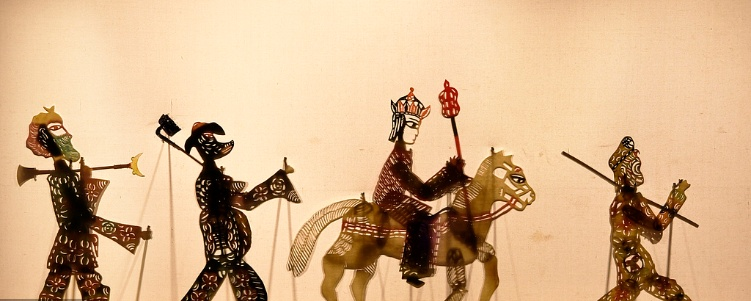
问答互动
1. What is the relationship between cultural confidence and the attitude towards other cultures?
A. Cultural confidence makes people close themselves off from other cultures.
B. People with cultural confidence show more empathy and welcome cultural exchanges.
C. Cultural confidence has no impact on the attitude towards other cultures.
D. People with cultural confidence are threatened by other cultures.
2. Why are cultural resources diverse and complex?
A. Only because of geographical differences.
B. Due to the collapse of traditional ways of understanding culture.
C. Because of differences in geographical regions, schools of thought, and the inventiveness of artists, etc., as well as conflicting historical memories.
D. Mainly because of the spread of a culture of violence.
3. What is the impact of combining cultural confidence and cultural openness?
A. It makes people confused about their cultural identity.
B. It restricts the development of self - understanding and inventiveness.
C. It helps people better understand themselves and promotes the growth and evolution of self - understanding and inventiveness.
D. It has no significant impact on cultural development.
